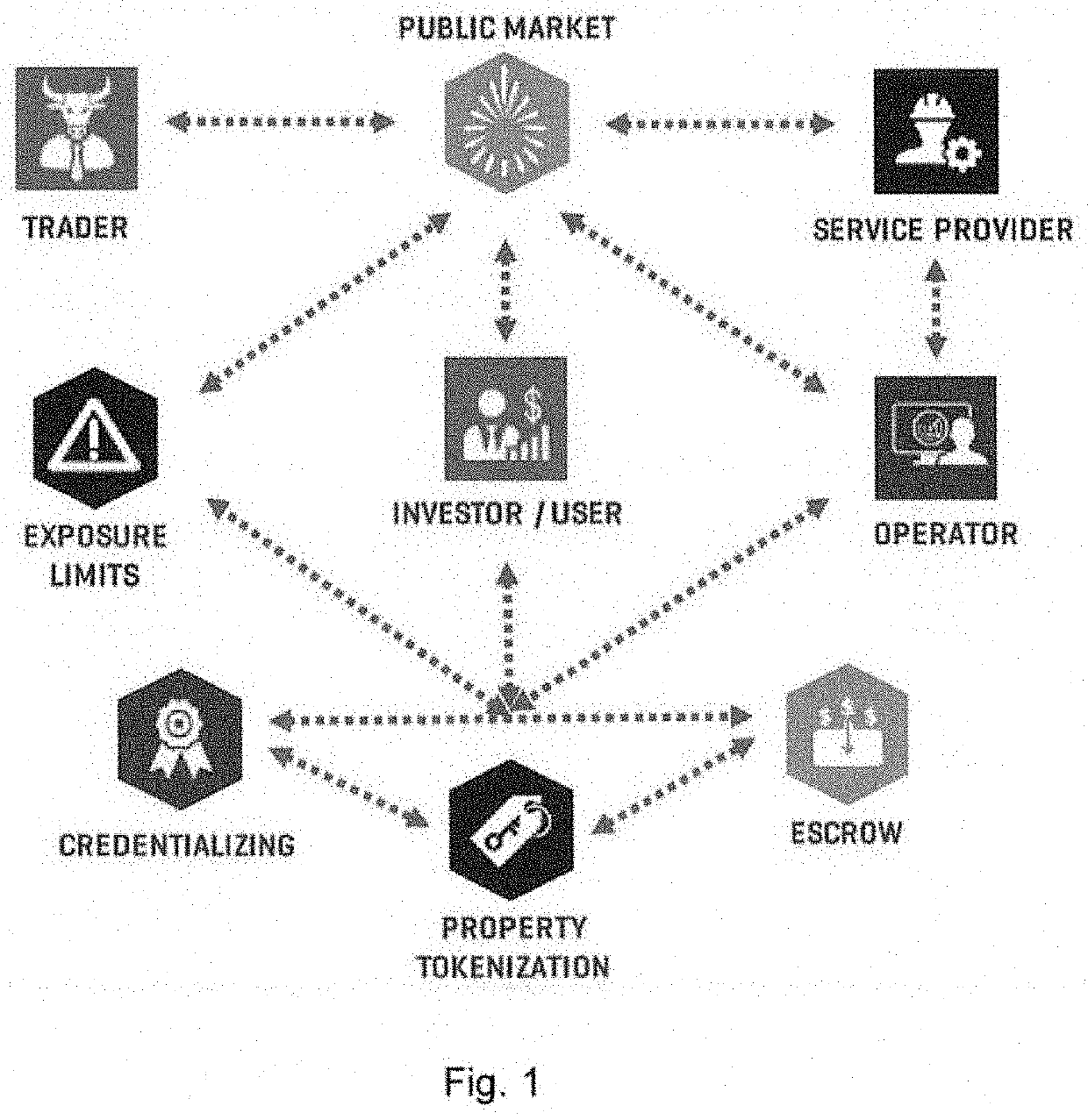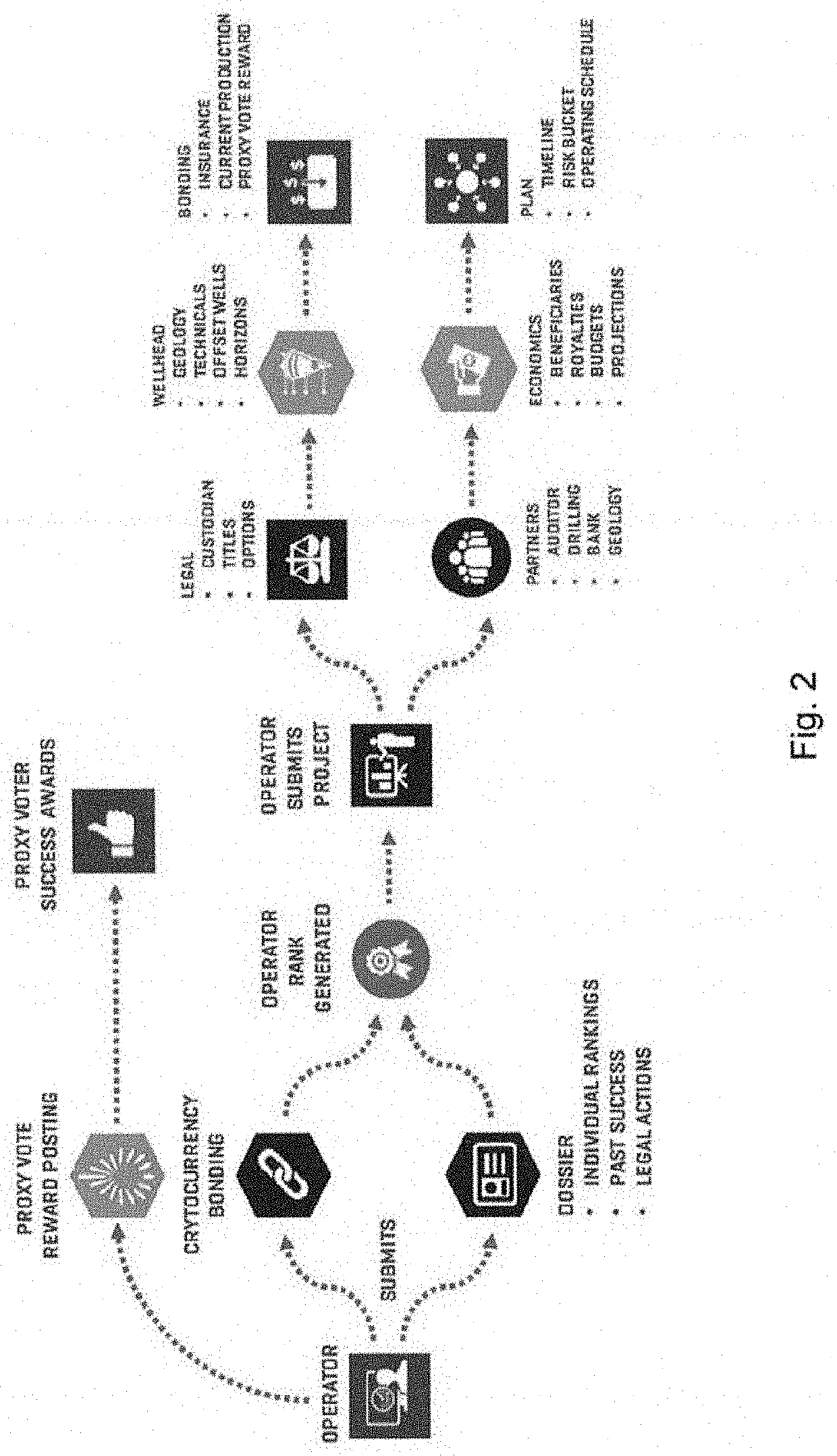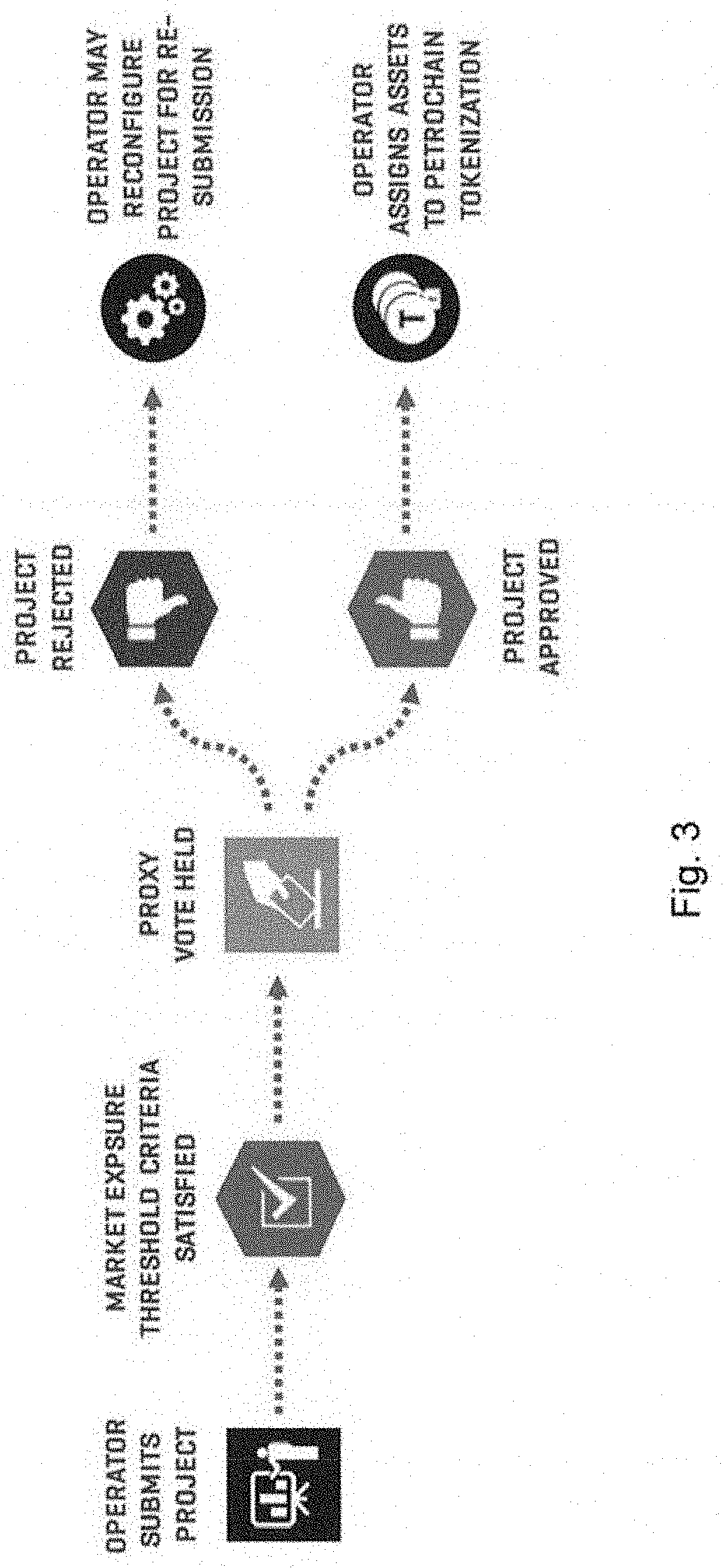Oil and gas upstream supply chain transactions are affected by points of friction caused by antagonistic
counterparty relationships, low-trust, low-technology, information
asymmetry and
opacity, high capital costs and
time to market.
Some disadvantages with known processes employed in the oil and gas and energy industry include funding gaps, mutual trust issues, and transparency problems.
In general, resistance to technology leads to funding gaps.
Lack of operator transparency and risk management constraints lead to investment liquidity issues.
Additionally, there tends to be a
service provider and operator trust gap that results in problems.
For operators, problems include high capital costs, delays with
time to market, title perfection, and vendor selection.
For investors, problems include project transparency, risk management, liquidity, dispute resolution, and audits.
For vendors, problems include
payment delays, high leverage, and carrying operator expenses.
Further problems and disadvantages with current systems include: Oil and gas investment managers create barriers to efficient capital allocation.
Oil and gas investment brokers are expensive, create friction, and are of questionable effectiveness.
Independent oil and gas operators have low trust, and often retain a low percentage ownership and high costs of capital.
An inability to do so can cause a drastic over or undershoot in capital needs which can cause investor
dilution and project stoppage.
Independent oil and gas operators must often combine many different securities types from many different competing capital partners which can cause extreme
time delays in ultimate project capital formation.
Independent oil and gas operators must often pledge personal guarantees to traditional financing sources, and many types of collateral are insufficient.
Compliance with financial reporting standards for both royalty owners and public equity financing can be expensive and onerous, and large amounts of management's time can be devoted to non-accretive investor relations.
Siloed, non-distributed capital allocation managers experience relatively rapid diminishing marginal returns of equity financing.
Legacy securities market voting and stockholding infrastructure is inherently prone to misstatements.
Investor proxy vote governance conventions for publicly-traded firms are prone to highly inaccurate share counting and over-issuance due to reconciliation problems which develop through multiple
layers of intermediary custodians and counterparties.
Investment governance hindered by financial intermediary
counterparty risk.
Oil and gas projects are often driven by tax incentives rather than project merit, causing waste, poor capital allocation decisions, and incentivizing independent oil and gas operators to misstate project realities due to investor price insensitivity, which in turn diminishes industry trust and adds to overall capital allocation friction.
General non-well specific industry risks disincentivize technology adoption.
Counterparties in the oil and gas development
ecosystem have unique trust, transaction, cash flow, operational and financial leverage difficulties which causes fragmentation and resistance to technological improvement in the industry.
Oil and gas projects assembled for investment have low transparency and critical information
asymmetry.
Oil and gas contract vendors are often highly leveraged, have thin operating margins, and often inappropriately carry the cost of project development.
Oil and gas securities are complicated,
time consuming, and expensive to form.
Legal registration and securities formation are analog, inefficient and expensive.
Minor legalistic errors can create exceptionally expensive and time-consuming challenges and drastically reduce project returns.
The cost of defending oil and gas asset property rights can be prohibitively high, discouraging capital allocation.
The limitations of conventional banking create cash flow tightness and friction in accounts receivable and
accounts payable.
Oil and gas investments often have lockup periods of greater than five years, subjecting investors to pronounced liquidity risk and deeper
exposure to commodity price cyclicality.
Oil and gas investment illiquidity creates a double-
coincidence of wants problem whereby the operator management and investors must enjoy highly-acute synchrony of goals and strategies, which stalls capital formation.
Presently there is no solution to allocate capital and confirm assets and transactions in a distributed way without individual investment managers acting as capital custodians, title companies acting as title custodians, and banks acting as clearing agents, all of which create information, transaction and capital allocation friction.
As a consequence, capital costs and access for many independent producers can be both volatile and high for sustained periods in a manner divorced from the economics of individual
energy development projects.
Furthermore, after 2009, emerging market real economic growth drove expansion in barrels
per capita and propelled global supply tightness.
The curtailed export of US dollars for oil import purchases, and the ensuing global supply tightness in US dollars triggered a
chain reaction of global currency devaluations in oil states and altered the 20 year upward-trending oil price floor.
Attempts to squeeze competitive North American producers to secure political and monetary control at home resulted in lower prices and sharply reduced deal flow in the West.
Likewise, capital costs have surged.
The disinterest in more speculative plays and the constrained investment climate have precluded even more generous net revenue interest offerings.
Despite
record high
crude oil stocks, the flat
crude oil five-year forward curve suggests investors do not expect supply to trail demand, despite the poor investment climate.
Renewed supply tightness may be insufficient to immediately drive new exploration and lower capital costs given the effect of a strong US dollar on GDP growth outlook in emerging Asia, an overhang of
underwater energy debt, and a damaged risk
appetite.
The consequence could likely be that an unplanned supply tightness, driven by unexpected positivity in US GDP growth on one side or increased geopolitical risk on the other, could cause a rapid increase in
crude oil prices.
When commodity prices are high, the discipline in both investing and execution of
wellhead development both tend to degrade.
The consequence is more waste today and more assumed risk tomorrow.
This increases capital costs and legal burdens for capital formation for everybody in the industry.
When prices are high, vendors are constantly rushing to finish one job to get to the next, and poor execution choices are made.
Independent exploration projects under $25M in size have suffered more acutely from this period of weak funding
appetite.
Moreover, these projects typically fall within a large funding gap, too large for retail investors (above $500,000), yet too small for institutional investors (below $25M).
These projects are therefore funded by individual investors and small private equity partners with limited risk budgets, and which may be difficult to approach or simply be unknown to individual exploration teams.
The market suffers from wide inefficiencies which are very costly to bridge.
Independent exploration firms (operators) also find that regulations around capital raising are onerous and
time consuming.
Registration requirements, time lost and other opportunity costs, difficulty identifying capital, and legal expenses are often prohibitive for firms capitalized under ˜$25M.
The market is characterized by excessive frictional control by larger oligopolistic entities which often profit from diseconomy rather than competitiveness.
This segment of the industry often poses higher risks to investors, both due to its exploratory nature and a higher investor susceptibility to misrepresentation by promoters and operating companies.
Problems exist with funding gaps, mutual trust, and transparency.
Presently, there are technology resistance and funding gaps.
There is also a trust gap for service providers and operators.
Also, for operators, there are high capital costs,
time to market is delayed, title perfection issues and vendor selection.
For investors, project transparency, risk management, liquidity, dispute resolution and audit all present problems.
Finally, for vendors, there are problems with
payment delays, high leverage, and carrying operator expenses.
 Login to View More
Login to View More  Login to View More
Login to View More 


